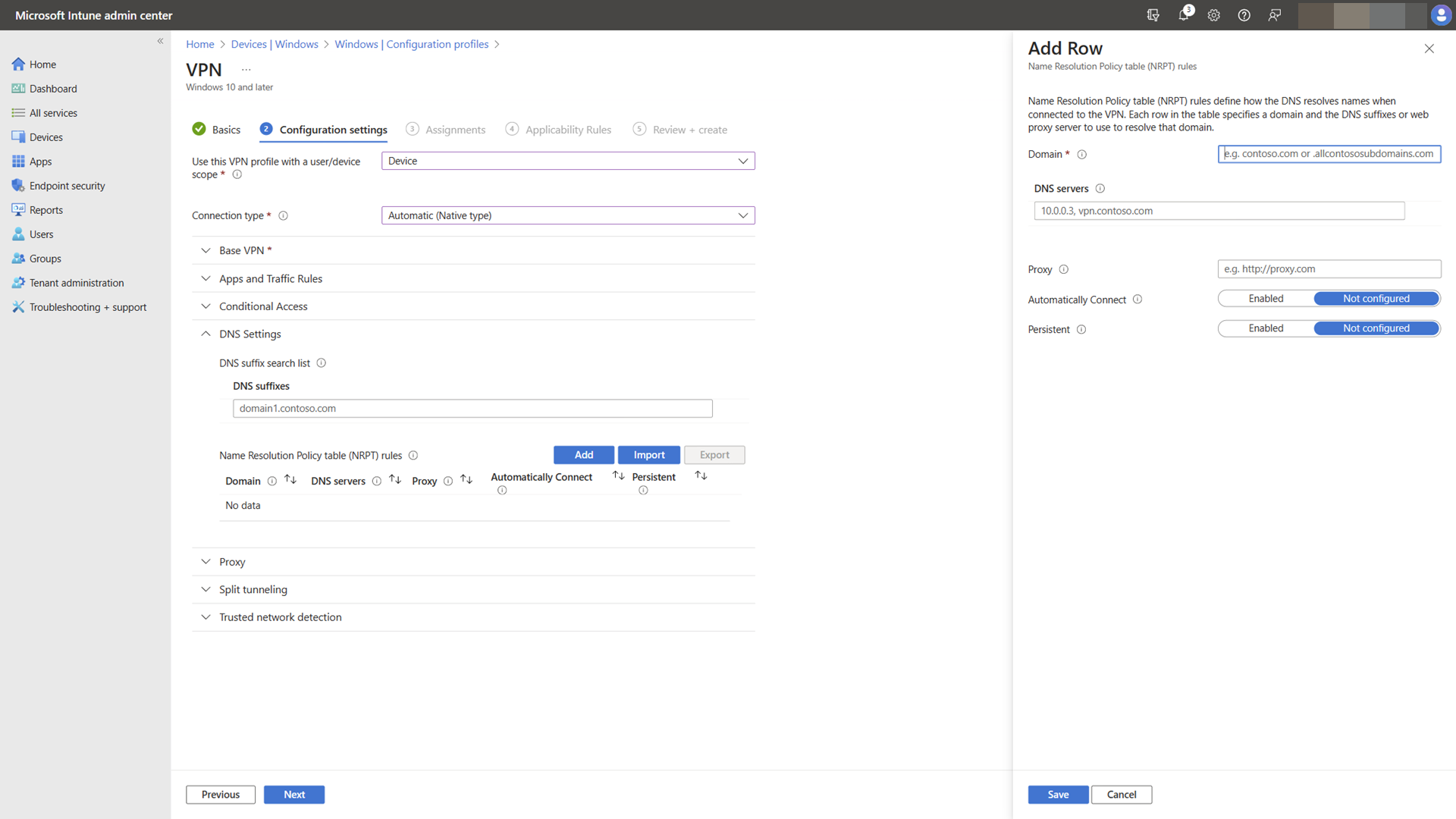VPN name resolution
When the VPN client establishes a connection, it receives an IP address and, optionally, the IP address of one or more DNS servers.
The name resolution setting in the VPN profile determines how name resolution works on the system when the VPN connection is established:
- The network stack looks at the Name Resolution Policy table (NRPT) for any matches, and tries a resolution if a match is found
- If no match is found, the DNS suffix on the most preferred interface based on the interface metric is appended to the name (if a short name is used). A DNS query is sent to the preferred interface
- If the query times out, the DNS suffix search list is used in order and DNS queries are sent on all interfaces
Name Resolution Policy table (NRPT)
The NRPT is a table of namespaces that determines the DNS client's behavior when issuing name resolution queries and processing responses. It's the first place that the stack will look after the DNSCache.
There are three types of name matches that can set up for NRPT:
- Fully qualified domain name (FQDN) that can be used for direct matching to a name
- Suffix match results in either a comparison of suffixes (for FQDN resolution) or the appending of the suffix (if using short name)
- Any resolution should attempt to first resolve with the proxy server/DNS server with this entry
NRPT is set using the VPNv2/<ProfileName>/DomainNameInformationList node of the VPNv2 CSP. You can use the same node to configure a Web proxy server or DNS.
To learn more about NRPT, see Introduction to the NRPT.
DNS suffix
The DNS suffix setting is used to configure the primary DNS suffix for the VPN interface and the suffix search list after the VPN connection is established.
Primary DNS suffix is set using the VPNv2/<ProfileName>/DnsSuffix node.
Learn more about primaryDNS suffix
Persistent name resolution rules
You can configure persistent name resolution rules. Name resolution for the specified items is done over the VPN.
Persistent name resolution is set using the VPNv2/<ProfileName>/DomainNameInformationList/<dniRowId>/Persistent node.
Configure name resolution
See VPN profile options and VPNv2 CSP for XML configuration.
The following image shows name resolution options in a VPN Profile configuration policy using Microsoft Intune.
The fields in Add or edit DNS rule in the Intune profile correspond to the XML settings shown in the following table.
| Field | XML |
|---|---|
| Name | VPNv2/ProfileName/DomainNameInformationList/dniRowId/DomainName |
| Servers (comma separated) | VPNv2/ProfileName/DomainNameInformationList/dniRowId/DnsServers |
| Proxy server | VPNv2/ProfileName/DomainNameInformationList/dniRowId/WebServers |
